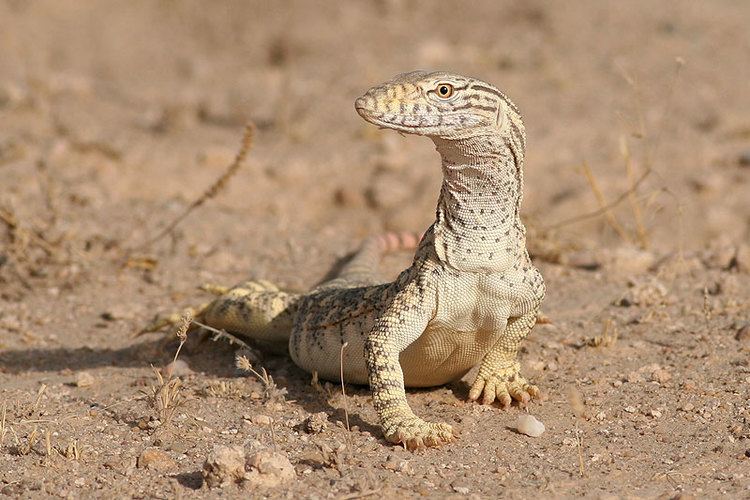
Introducing the Desert Monitor
The desert monitor is a large lizard, reminiscent of a dragon, and commanding instinctive respect from anyone who sees it. It is common throughout the Central Asian steppe, can weigh up to 3 kg and grow up to one and a half metres long.
Desert monitors can also be found in North Africa and Southeast Asia. It mainly inhabits sandy deserts and is very well adapted to harsh environments.
The desert monitor’s primary color is brownish with circumferential stripes, which allows it to blend easily into the desert landscape. It can also change colour to match its surroundings, and is diurnal.
Each year, females over the age of four lay up to 20 eggs in their burrows. Hatchlings crawl up to the surface, where they are left to fend completely for themselves – not all of them surviving this process. The average lifespan of a desert monitor is around 10 years.
There are many myths pertaining to this unique lizard. For instance, it is said that it can break a dog’s leg with its tail, and bite off a human finger with its sharp teeth.
The Uzbek name for the desert monitor is “echkemar”, which means “creature which sucks goats’ milk”. It is probably associated with yet another myth that this lizard creeps into barns at night, wraps its tail around goats’ legs, and drinks their milk.
The English name of the monitor lizard is representative of its lifestyle. Roaming regularly through colonies of rodents, it eats not only unwary inhabitants, but any living creature within its grasp: birds, smaller lizards, snakes, insects and sometimes hares, hedgehogs and turtles.
Despite being a terror to all small desert inhabitants, young desert monitors may themselves become a larger predator’s lunch; birds of prey and foxes being their enemy. When feeling threatened, the lizard hisses, expands its body by inhaling, and strikes out with its tail, lashing it from side to side. Its numerous small teeth are well suited to holding its prey. Males often use their teeth to fight off potential rivals during the mating season. However, desert monitors prefer to retreat when they encounter humans.
These lizards can remain in hibernation for as long as one and a half years. In cooler weather, they are not as fast as they are under the hot summer sun, when they can demonstrate unexpected agility and sprint short distances at amazing speed. Desert monitors can easily climb small trees and enter various burrows, enlarging them if necessary.
In the 20th Century, desert monitor leather came into fashion, and they were killed in tens of thousands. This led to a sharp drop in their numbers in the wild, and in some areas they became extinct. The situation was worsened by the encroachment of cultivation into their habitats. Nowadays the desert monitor species are included in the Red Book of the International Union of Conservation of Nature (IUCN) and national Red Books of countries where this animal is still found. Intrepid naturalists may see this unusual lizard in Tashkent Zoo or on an adventurous trip to Central Asian deserts.
Alexander Esipov
Helen Bykova
Photos by Alexander Esipov
